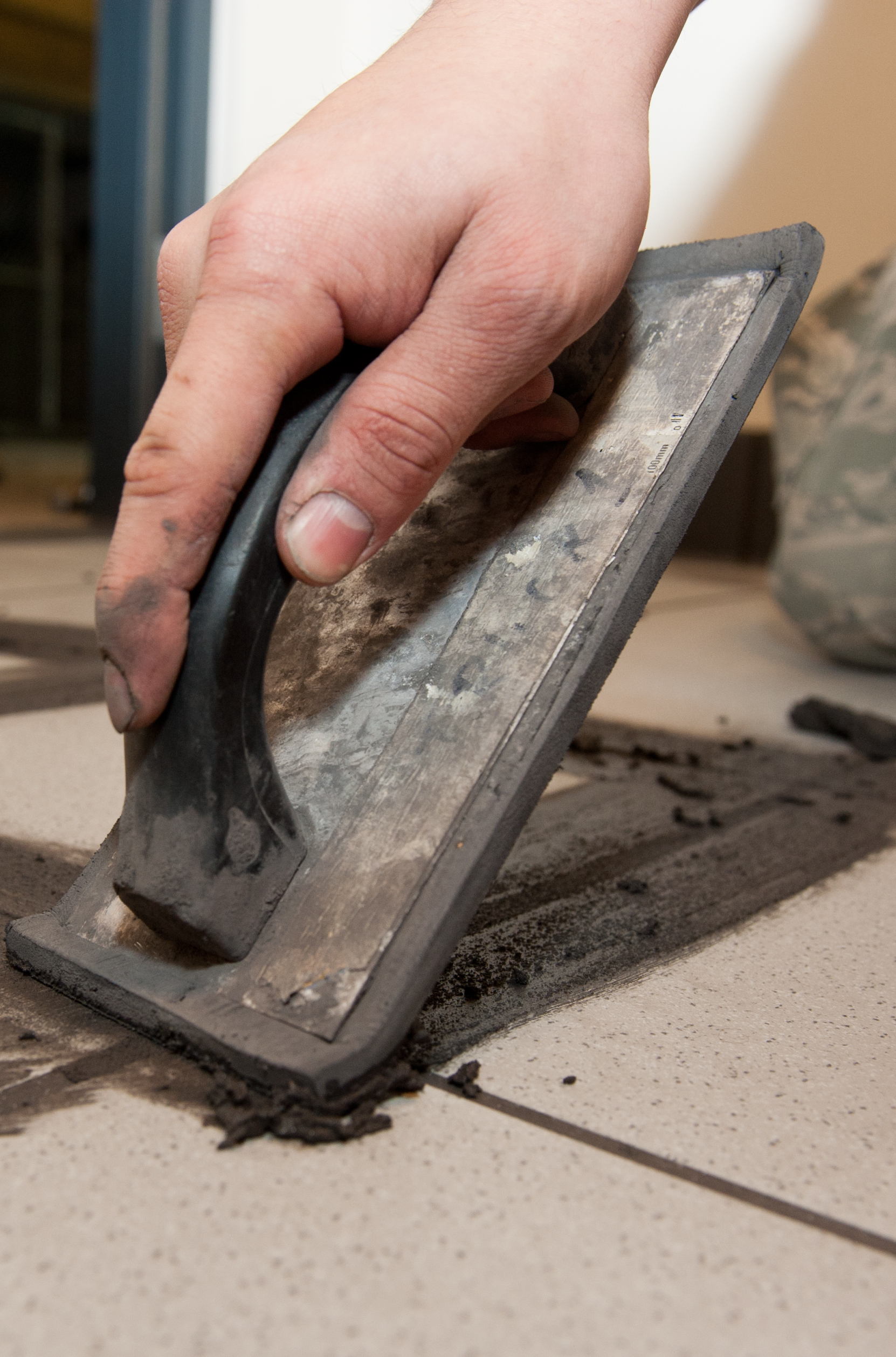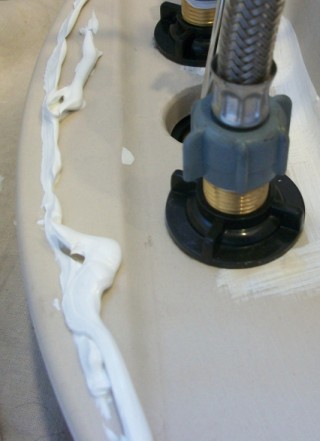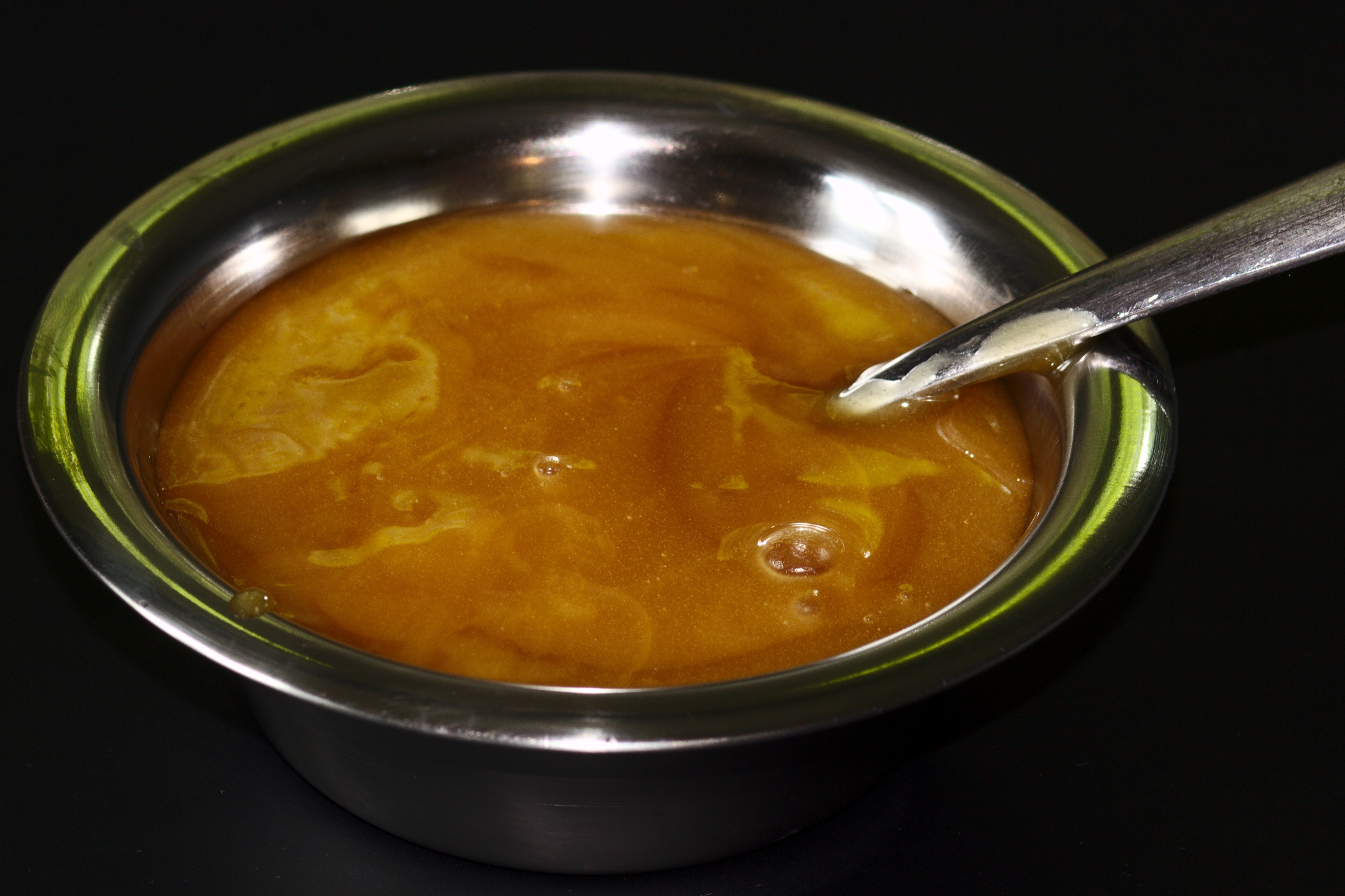|
Grout
Grout is a dense substance that flows like a liquid yet hardens upon application, often used to fill gaps or to function as reinforcement in existing structures. Grout is generally a mixture of water, cement, and sand, and is frequently employed in efforts such as pressure grouting, embedding rebar in masonry walls, connecting sections of precast concrete, filling voids, and sealing joints such as those between tiles. Common uses for grout in the household include filling in tiles of shower floors and kitchen tiles. It is often color tinted when it has to be kept visible and sometimes includes fine gravel when being used to fill large spaces (such as the cores of concrete blocks). Unlike other structural pastes such as plaster or joint compound, correctly mixed and applied grout forms a water-resistant seal. Although both grout and its close relative, mortar, are applied as a thick suspension and harden over time, grout is distinguished by its low viscosity and lack of lime ... [...More Info...] [...Related Items...] OR: [Wikipedia] [Google] [Baidu] |
Pressure Grouting
Pressure grouting or jet grouting involves injecting a grout material into otherwise inaccessible but interconnected pore or void space of which neither the configuration or volume are known, and is often referred to simply as ''grouting''. The grout may be a cementitious, resinous, or solution chemical mixture. Some types of injected grout may not penetrate, and may subsequently shrink and pull away even when coarse sediments have been penetrated. Different grout may be needed for fine grained and coarse grained soils in the grouted area. The greatest use of pressure grouting is to improve geomaterials (soil and rock). The purpose of grouting can be either to strengthen a formation or to reduce water flow through it. It is also used to correct faults in concrete and masonry structures. In 1986 a study conducted by the Hazardous Waste Engineering Research Laboratory of the US Environmental Protection Agency tested acrylate, Portland cement and different compositions of s ... [...More Info...] [...Related Items...] OR: [Wikipedia] [Google] [Baidu] |
Concrete
Concrete is a composite material composed of aggregate bound together with a fluid cement that cures to a solid over time. It is the second-most-used substance (after water), the most–widely used building material, and the most-manufactured material in the world. When aggregate is mixed with dry Portland cement and water, the mixture forms a fluid slurry that can be poured and molded into shape. The cement reacts with the water through a process called hydration, which hardens it after several hours to form a solid matrix that binds the materials together into a durable stone-like material with various uses. This time allows concrete to not only be cast in forms, but also to have a variety of tooled processes performed. The hydration process is exothermic, which means that ambient temperature plays a significant role in how long it takes concrete to set. Often, additives (such as pozzolans or superplasticizers) are included in the mixture to improve the physical prop ... [...More Info...] [...Related Items...] OR: [Wikipedia] [Google] [Baidu] |
Mortar (masonry)
Mortar is a workable paste which hardens to bind building blocks such as stones, bricks, and concrete masonry units, to fill and seal the irregular gaps between them, spread the weight of them evenly, and sometimes to add decorative colours or patterns to masonry walls. In its broadest sense, mortar includes pitch, asphalt, and soft clay, as those used between bricks, as well as cement mortar. The word "mortar" comes from the Old French word ''mortier'', "builder's mortar, plaster; bowl for mixing." (13c.). Cement mortar becomes hard when it cures, resulting in a rigid aggregate (composite) , aggregate structure; however, the mortar functions as a weaker component than the building blocks and serves as the sacrificial element in the masonry, because mortar is easier and less expensive to repair than the building blocks. Bricklayers typically make mortars using a mixture of sand, a binder, and water. The most common binder since the early 20th century is Portland cement, but ... [...More Info...] [...Related Items...] OR: [Wikipedia] [Google] [Baidu] |
Non-shrink Grout
Non-shrink grout is a hydraulic cement grout that, when hardened under stipulated test conditions, does not shrink, so its final volume is greater than or equal to the original installed volume. It is often used as a transfer medium between load-bearing members. Testing Test standards used to designate a grout as ''non-shrink'' include, but are not limited to: C1090-01(2005)e1 Standard Test Method for Measuring Changes in Height of Cylindrical Specimens of Hydraulic-Cement Grout *ASTM C 1107 Typical characteristics * Often sets rapidly * Usually a pre-mix product that needs only to be mixed with ater* Includes ingredients to compensate against cement stone shrinkage * Use of shrinkage-compensating ingredients can result in volume increase over time. * Has a high strength of over 10,000 psi or near 100 MPa per ASTM C109. Typical cementitious materials caveats Despite the use of expanding or shrinkage-compensating ingredients, users are ordinarily cautioned to avoid environments ... [...More Info...] [...Related Items...] OR: [Wikipedia] [Google] [Baidu] |
Caulk
Caulk (also known as caulking and calking) is a material used to Seal (mechanical), seal Joint (building), joints or seams against leakage in various structures and piping. The oldest form of caulk consisted of fibrous materials driven into the wedge-shaped seams between boards on Boat building#Wood, wooden boats or ships. Cast iron Sanitary sewer, sewerage Water pipe, pipes were formerly caulked in a similar way. Riveted seams in ships and boilers were formerly sealed by hammering the metal. Modern caulking compounds are flexible sealing compounds used to close up gaps in buildings and other structures against water, air, dust, insects, or as a component in firestopping. In the tunneling industry, caulking is the sealing of joints in segmental precast concrete tunnels, commonly by using concrete. Historical uses Wooden shipbuilding Traditional caulking (also spelled calking) on wooden vessels uses fibers of cotton and oakum (hemp) soaked in pine tar. These fibers are drive ... [...More Info...] [...Related Items...] OR: [Wikipedia] [Google] [Baidu] |
Angi
Angi (formerly Angie's List) is an American home services website owned by Angi Inc., a publicly traded subsidiary of IAC. Founded in 1995 by Angie Hicks and William S. Oesterle, it allows users to search for contractors to provide paid home improvement work. The service was originally developed as a database of reviews for local services. Angie's List was a subscription-based service for most of its existence, but shifted to a freemium model in July 2016. In 2017, the company was acquired by IAC and merged with HomeAdvisor. HomeAdvisor became Angi Leads. In January 2025, IAC announced plans to spin-off Angi in the second quarter of 2025. History Angie Hicks and William S. Oesterle founded Angie's List in 1995. The idea resulted from Hicks's search for a reliable construction contractor in suburban Columbus, Ohio, on behalf of Oesterle, a venture capitalist who was Hicks's boss. Hicks moved to Columbus to join Oesterle in creating Columbus Neighbors, a call-in service a ... [...More Info...] [...Related Items...] OR: [Wikipedia] [Google] [Baidu] |
Tile
Tiles are usually thin, square or rectangular coverings manufactured from hard-wearing material such as ceramic, Rock (geology), stone, metal, baked clay, or even glass. They are generally fixed in place in an array to cover roofs, floors, walls, edges, or other objects such as tabletops. Alternatively, tile can sometimes refer to similar units made from lightweight materials such as perlite, wood, and mineral wool, typically used for wall and ceiling applications. In another sense, a tile is a construction tile or similar object, such as rectangular counters used in playing games (see tile-based game). The word is derived from the French Language, French word ''tuile'', which is, in turn, from the Latin Language, Latin word ''tegula'', meaning a roof tile composed of fired clay. Tiles are often used to form wall and floor coverings, and can range from simple square tiles to complex or mosaics. Tiles are most often made of pottery, ceramic, typically Ceramic glaze, glazed for ... [...More Info...] [...Related Items...] OR: [Wikipedia] [Google] [Baidu] |
Flooring
Flooring is the general term for a permanent covering of a floor, or for the work of installing such a floor covering. Floor covering is a term to generically describe any finish material applied over a floor structure to provide a walking surface. Both terms are used interchangeably but floor covering refers more to loose-laid materials. Materials almost always classified as flooring include carpet, laminate, tile, and vinyl. Subfloor The floor under the flooring is called the subfloor, which provides the support for the flooring. Special purpose subfloors like floating floors, raised floors or sprung floors may be laid upon another underlying subfloor which provides the structural strength. Subfloors that are below grade (underground) or ground level floors in buildings without basements typically have a concrete subfloor. Subfloors above grade (above ground) typically have a plywood subfloor. Flooring materials The choice of materials for floor covering is affected by ... [...More Info...] [...Related Items...] OR: [Wikipedia] [Google] [Baidu] |
Thixotropy
Thixotropy is a time-dependent shear thinning property. Certain gels or fluids that are thick or viscous under static conditions will flow (become thinner, less viscous) over time when shaken, agitated, shear-stressed, or otherwise stressed ( time-dependent viscosity). They then take a fixed time to return to a more viscous state. Some non-Newtonian pseudoplastic fluids show a time-dependent change in viscosity; the longer the fluid undergoes shear stress, the lower its viscosity. A thixotropic fluid is a fluid which takes a finite time to attain equilibrium viscosity when introduced to a steep change in shear rate. Some thixotropic fluids return to a gel state almost instantly, such as ketchup, and are called pseudoplastic fluids. Others such as yogurt take much longer and can become nearly solid. Many gels and colloids are thixotropic materials, exhibiting a stable form at rest but becoming fluid when agitated. Thixotropy arises because particles or structured solutes re ... [...More Info...] [...Related Items...] OR: [Wikipedia] [Google] [Baidu] |
Resin
A resin is a solid or highly viscous liquid that can be converted into a polymer. Resins may be biological or synthetic in origin, but are typically harvested from plants. Resins are mixtures of organic compounds, predominantly terpenes. Common resins include amber, hashish, frankincense, myrrh and the animal-derived resin, shellac. Resins are used in varnishes, adhesives, food additives, incenses and perfumes. Resins protect plants from insects and pathogens, and are secreted in response to injury. Resins repel herbivores, insects, and pathogens, while the volatile natural phenol, phenolic compounds may attract benefactors such as predators of insects that attack the plant. Composition Most plant resins are composed of terpenes. Specific components are alpha-Pinene, alpha-pinene, pinene, beta-pinene, carene, delta-3 carene, and sabinene, the monocyclic terpenes limonene and terpinolene, and smaller amounts of the tricyclic sesquiterpenes, longifolene, caryophyllene, and cad ... [...More Info...] [...Related Items...] OR: [Wikipedia] [Google] [Baidu] |
Dirt
Dirt is any matter considered unclean, especially when in contact with a person's clothes, skin, or possessions. In such cases, they are said to become dirty. Common types of dirt include: * Debris: scattered pieces of waste or remains * Dust: a general powder of organic or mineral matter * Filth: foul matter such as excrement * Grime: a black, ingrained dust such as soot * Soil: the mix of clay, sand, and humus which lies on top of bedrock. The term 'soil' may be used to refer to unwanted substances or dirt that are deposited onto surfaces such as clothing. Etymology The word ''dirt'' first appears in Middle English and was probably borrowed from the Old Norse , meaning . Exhibitions and studies A season of artworks and exhibits on the theme of dirt was sponsored by the Wellcome Trust in 2011. The centrepiece was an exhibition at the Wellcome Collection showing pictures and histories of notable dirt such as the great dust heaps at Euston and King's Cross in the 1 ... [...More Info...] [...Related Items...] OR: [Wikipedia] [Google] [Baidu] |





